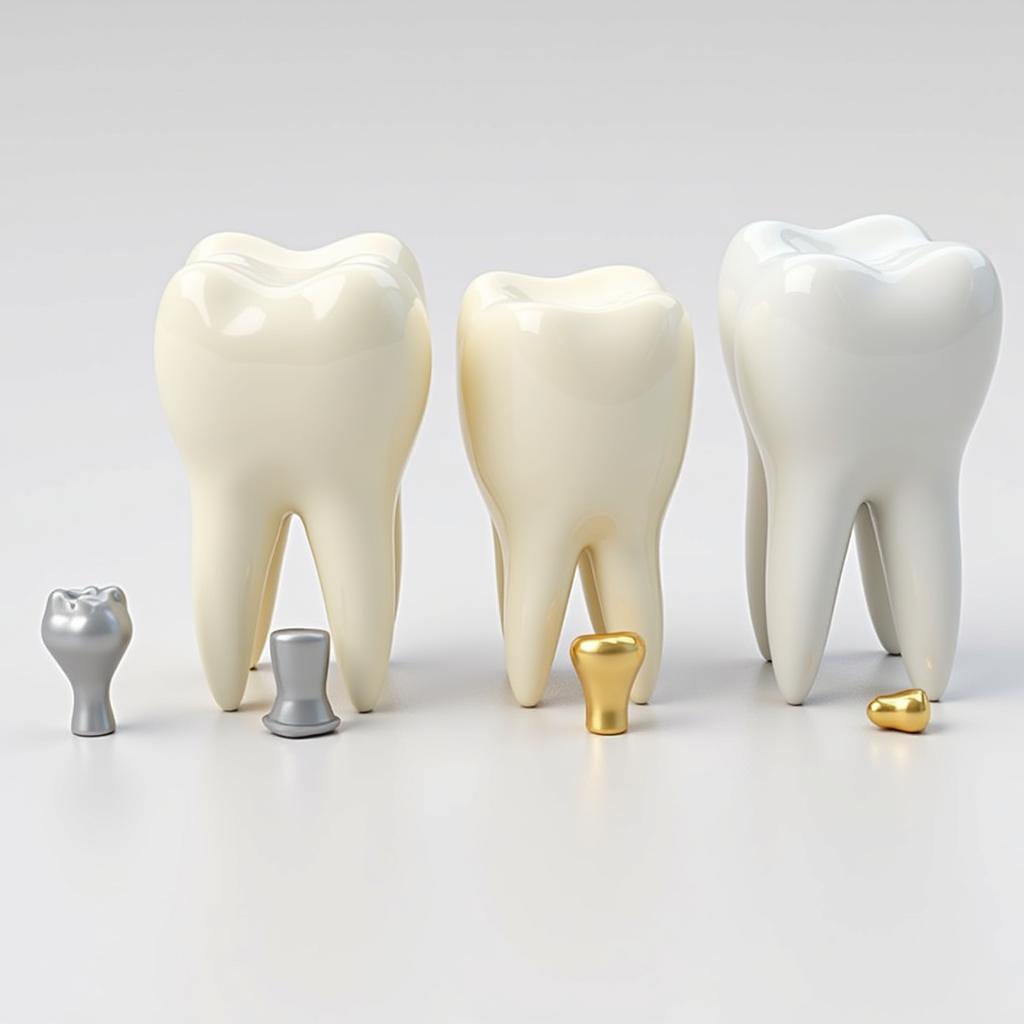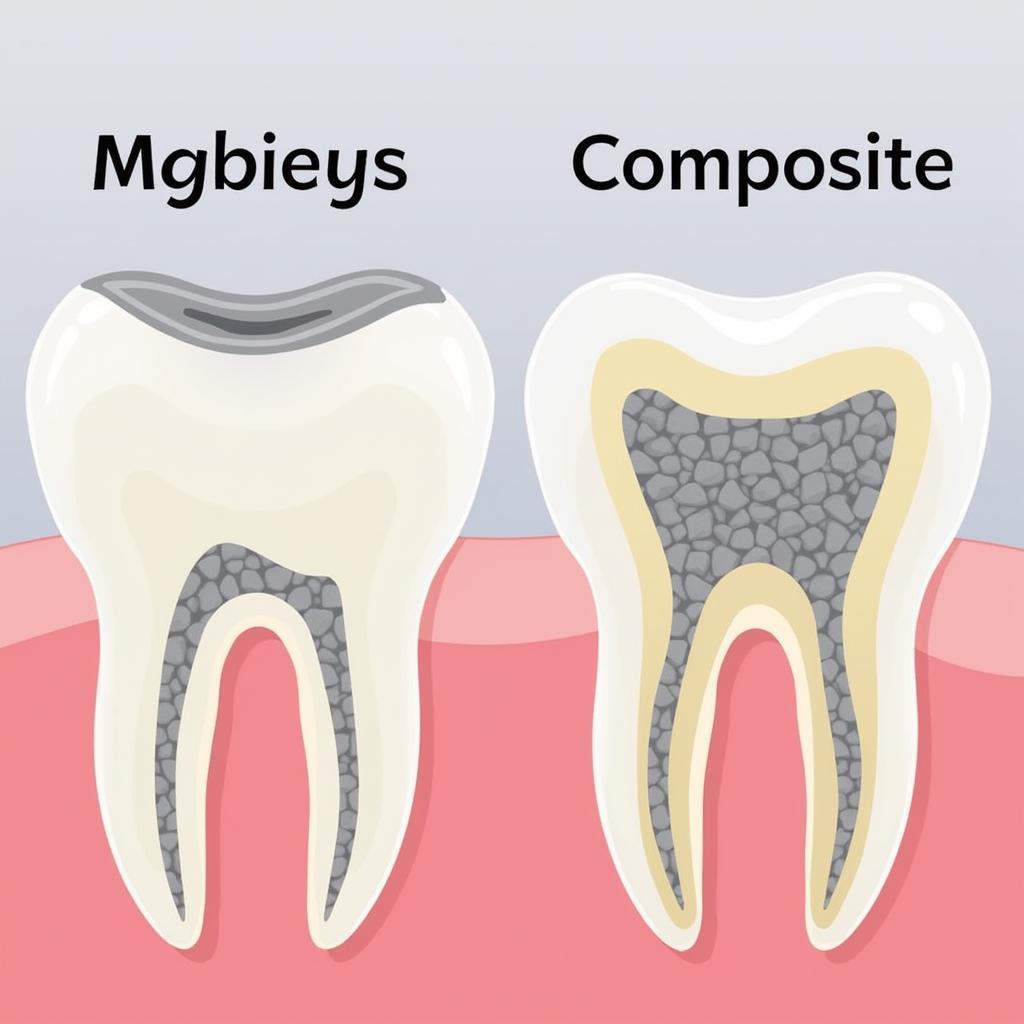Cavity fillings are an essential part of restorative dentistry, helping to repair teeth damaged by decay. But what color are cavity fillings? You might be surprised to learn there’s more than one answer. This article explores the various colors of cavity fillings, the materials used, and how the right shade is chosen for your smile. We will delve into the different types of fillings available and discuss how they impact the aesthetic outcome of your dental restoration.
Understanding Cavity Filling Colors
Traditionally, most people picture silver fillings when they think of dental restorations. However, modern dentistry offers a range of options to ensure your fillings blend seamlessly with your natural teeth. The color of your filling depends largely on the material used. Let’s explore the different types:
Amalgam (Silver) Fillings
Amalgam fillings are made from a mixture of metals, including silver, tin, copper, and mercury. These fillings are highly durable and cost-effective. Their distinctive silver color makes them easily noticeable, especially on more visible teeth.
Composite (Tooth-Colored) Fillings
Composite fillings are made from a resin material that can be precisely matched to the color of your natural teeth. They are aesthetically pleasing and a popular choice for restoring front teeth or other visible areas.
Gold Fillings
Gold fillings, while less common, are extremely durable and biocompatible. They have a distinct gold color and are often preferred by some individuals for their aesthetic appeal and longevity.
Ceramic Fillings
Ceramic fillings, typically made from porcelain, are another tooth-colored option. They are highly resistant to staining and offer excellent durability.
 Different Cavity Filling Color Options
Different Cavity Filling Color Options
How Your Dentist Chooses the Right Filling Color
Choosing the right color for your filling is crucial for achieving a natural-looking result. Your dentist will consider several factors, including:
- The location of the filling: Fillings for front teeth or other visible areas often require a tooth-colored material like composite or ceramic.
- The extent of the decay: Larger cavities may require a more durable material like amalgam or gold.
- Your budget: Different filling materials have varying costs.
- Your aesthetic preferences: You can discuss your desired outcome with your dentist to determine the best option for your smile.
Your dentist will use a shade guide to carefully match the filling material to the surrounding teeth. This ensures a seamless blend and a natural-looking restoration. They will also consider the translucency and opacity of the material to perfectly mimic your natural tooth enamel.
What Color Are Tooth Fillings for Back Teeth?
While aesthetics are a significant concern for front teeth, the primary focus for back teeth is often durability and functionality. Amalgam fillings are a common choice for back teeth due to their strength and resistance to wear and tear. However, tooth-colored composite resins are also frequently used, especially when appearance is a factor.
 Back Teeth Filling Options: Amalgam vs. Composite
Back Teeth Filling Options: Amalgam vs. Composite
The Longevity of Different Filling Colors
How long a filling lasts depends on several factors, including the material used, oral hygiene habits, and dietary habits. Amalgam fillings are known for their longevity, often lasting 10-15 years or more. Composite fillings typically last 5-7 years, while gold and ceramic fillings can last even longer with proper care. Regular dental checkups and good oral hygiene practices are essential for maintaining the integrity of your fillings, regardless of the material. Do you want to know how much does Medicaid cover for dental in Colorado? Visit our website for details. You can also read more about what color are tooth fillings on our dedicated page.
Conclusion
The color of your cavity filling plays a vital role in the overall aesthetics of your smile. Understanding the different options available and discussing your preferences with your dentist can help you achieve the best possible outcome. Whether you choose a tooth-colored filling for a seamless blend or a more durable option for back teeth, modern dentistry provides a range of solutions to restore your oral health and maintain a beautiful smile.
FAQ
-
Are white fillings better than silver fillings? Both have their advantages. White fillings are aesthetically pleasing, while silver fillings are more durable and cost-effective.
-
Can you change the color of a filling? Existing fillings cannot be changed color. However, they can be replaced with a different material or shade.
-
Do tooth-colored fillings stain? Composite fillings can stain over time, but maintaining good oral hygiene can minimize this.
-
How much do tooth-colored fillings cost? The cost varies depending on the size and location of the filling, as well as the dentist’s fees.
-
Are there any risks associated with different filling materials? All dental materials are rigorously tested and safe for use. Discuss any concerns with your dentist.
-
How often should I replace my fillings? Fillings should be checked regularly by your dentist, and replaced when necessary.
-
What is the best type of filling for children? Discuss the best options with your child’s dentist, considering factors such as age and the location of the cavity.
Other Questions We’ve Answered
- How to care for your fillings
- The benefits of preventative dental care
- Choosing the right dentist for your needs
Need help? Contact us: Phone: 0373298888, Email: [email protected]. Visit us at: 86 Cau Giay, Hanoi. We have a 24/7 customer service team.

